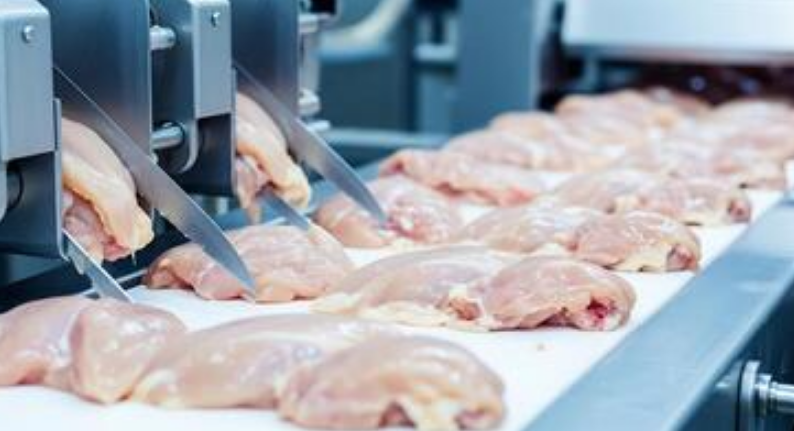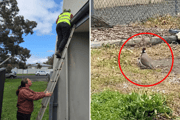
Every year, over 4.1 million Australians suffer from food poisoning, with more than 31,000 requiring hospitalisation. For those over 60, the stakes are even higher—older adults face greater risks of severe complications from foodborne illness, making proper food safety practices absolutely crucial.
While reaching for something from the freezer might seem like the quickest solution for dinner, some foods can turn dangerous if cooked straight from frozen.
Consumer experts from Which? have identified five common foods that should never go directly from freezer to pan, and understanding these guidelines could save you from a nasty bout of illness.
Why seniors face higher risks
Despite being extremely common, food poisoning has the potential to cause serious illness and even death, especially among vulnerable populations such as older adults, according to Australian health authorities.
The elderly are at particular risk of dehydration and complications from foodborne illnesses, with conditions like Listeria infection being particularly dangerous for older adults.
'Each year, there are an estimated 4.1 million cases of food poisoning in Australia'
The good news? Most food poisoning cases are entirely preventable with proper food handling practices—and that includes knowing which frozen foods need defrosting before cooking.
The frozen foods that need your attention
1. Raw chicken—Australia's biggest food safety concern
Campylobacter is the most common cause of food poisoning in Australia, with more than 3,200 people becoming so ill in 2014 that they ended up receiving hospital treatment. Raw chicken is a primary culprit.
While processed chicken products like nuggets can go straight from freezer to oven (always check the packaging instructions), raw chicken must be completely defrosted before cooking.
The reason? Uneven cooking creates perfect conditions for harmful bacteria like Campylobacter and Salmonella to survive.
FSANZ recommends cooking chicken to at least 75°C in the centre, and the only way to ensure this temperature is reached throughout is to start with properly defrosted meat.
Safe defrosting: Plan ahead and defrost in the refrigerator—this can take 24 hours or more for larger pieces. Never defrost chicken at room temperature, as this allows bacteria to multiply rapidly.
2. Home-frozen sausages—a common oversight
Here's where it gets tricky: some sausages sold frozen can be cooked directly from frozen, but home-frozen sausages always need complete defrosting first. The dense texture means the outside can cook and brown while the centre remains cold and potentially dangerous.
For immediate cooking, use your microwave's defrost setting. For later use, transfer them to the refrigerator and ensure the centres are completely thawed before cooking. Remember, sausages need to reach 75°C right through when cooked.
3. Mince—dense and potentially dangerous
Whether it's for your famous Bolognese or a hearty shepherd's pie, mince is a kitchen staple. However, those dense blocks of frozen mince are particularly risky if cooked from frozen.
The compact nature means the exterior can appear cooked while the interior remains cold—creating an ideal environment for harmful bacteria. All meat that has been minced must be cooked to at least 75°C in the centre according to Australian food safety standards.
Safe defrosting timeframes for common foods
Chicken breast: 12-24 hours in refrigerator
Whole chicken: 24-48 hours in refrigerator
500g mince: 12-24 hours in refrigerator
Sausages: 6-12 hours in refrigerator
Prawns: 8-12 hours in refrigerator
4. Prawns and shellfish—luxury with risks
Australia's love affair with seafood means many of us keep prawns in the freezer for special occasions. While some frozen prawn products are specifically designed to cook from frozen, most prawns and shellfish should be defrosted first.
Cooking prawns straight from frozen often results in tough, overcooked exteriors with cold centres—not only unpleasant to eat but potentially unsafe. Frozen foods should be defrosted in the fridge, not on the kitchen bench, advises the Australian Food Safety Information Council.
5. Homemade frozen meals—batch cooking gone wrong
Batch cooking is a brilliant money-saving strategy for seniors on fixed incomes, but large, dense portions like lasagne or cottage pie can be problematic when cooked from frozen. Layered dishes containing dairy products or mince are particularly risky—the dense composition means heating can be extremely uneven.
The solution? Portion your batch-cooked meals into smaller, shallower containers before freezing. This allows for more even heating and safer cooking from frozen.
Smart defrosting saves money too
Proper defrosting isn't just about safety—it's about getting the best value from your food purchases. Properly defrosted meat cooks more evenly, tastes better, and reduces waste from overcooked or spoiled food.
As the Australian Food Safety Information Council wisely advises: 'If in doubt, throw it out!' But with proper planning and safe defrosting practices, you'll rarely find yourself in doubt.
Essential food safety temperatures for Australian kitchens
- Chicken, mince, and sausages: 75°C in the centre
- Keep refrigerator at 5°C or below
- Never leave perishable food at room temperature for more than 2 hours
- Use a meat thermometer—it's the only reliable way to check safety
When to seek help
Older adults are at greater risk for severe illness from food poisoning, so don't hesitate to seek medical attention if you experience symptoms like persistent vomiting, severe dehydration, or symptoms lasting more than a few days.
You can get free qualified health advice by calling 13 HEALTH (13 43 25 84) - a valuable resource for any food safety concerns.
Remember, Australia's 4.1 million annual cases of food poisoning are largely preventable with proper food handling. Taking a few extra minutes to defrost properly could save you days of illness and potentially serious health complications.
What's your biggest challenge when it comes to meal planning and food safety? Have you experienced any close calls with frozen foods? Share your experiences and tips in the comments below—your fellow readers would love to learn from your kitchen wisdom.
Original Article
https://www.dailymail.co.uk/science...tml?ns_mchannel=rss&ns_campaign=1490&ito=1490
Food Poisoning (Foodborne Illness) | Ausmed
Cited text: Despite being extremely common, food poisoning has the potential to cause serious illness and even death, especially among vulnerable populations such...
Excerpt: Despite being extremely common, food poisoning has the potential to cause serious illness and even death, especially among vulnerable populations such as older adults
https://www.ausmed.com.au/learn/articles/food-poisoning
Food poisoning | NSW Food Authority
Cited text: the person is at risk of dehydration such as infants and the elderly.
Excerpt: The elderly are at particular risk of dehydration and complications from foodborne illnesses, with conditions like Listeria infection being particularly dangerous for older adults
https://www.foodauthority.nsw.gov.au/consumer/food-poisoning
Food poisoning—symptoms, causes and treatment | healthdirect
Cited text: Listeria infection is uncommon but very dangerous for the elderly, people whose immune systems are not working properly and pregnant women and their u...
Excerpt: The elderly are at particular risk of dehydration and complications from foodborne illnesses, with conditions like Listeria infection being particularly dangerous for older adults
https://www.healthdirect.gov.au/food-poisoning
Foodborne disease outbreaks | Queensland Health
Cited text: Campylobacter is the most common cause of food poisoning in Australia, with more than 3200 people becoming so ill in 2014 that they ended up receiving...
Excerpt: Campylobacter is the most common cause of food poisoning in Australia, with more than 3,200 people becoming so ill in 2014 that they ended up receiving hospital treatment
https://www.health.qld.gov.au/clini...seases-infection/diseases/foodborne/outbreaks
Food safety basics | Food Standards Australia New Zealand
Cited text: FSANZ recommends cooking the following foods to at least 75°C in the centre: ... all meat that has been minced or rolled (beef, lamb, kangaroo or pork...
Excerpt: FSANZ recommends cooking chicken to at least 75°C in the centre, and the only way to ensure this temperature is reached throughout is to start with properly defrosted meat
https://www.foodstandards.gov.au/consumer/safety/food-safety-basics
STANDARD 3.2.2 FOOD SAFETY PRACTICES AND GENERAL REQUIREMENTS
Cited text: The person responsible for cooking the chicken has · the required knowledge that a chicken is sufficiently cooked when its internal · temperature has ...
Excerpt: FSANZ recommends cooking chicken to at least 75°C in the centre, and the only way to ensure this temperature is reached throughout is to start with properly defrosted meat
https://www.foodstandards.gov.au/si... per cent20General per cent20Requirements.pdf
foodsafety.asn.au Food Safety at Your Finger Tips—Food Safety Information Council Ltd
Cited text: Cook chicken, minced or boned meats, hamburger, stuffed meats and sausages right through until they reach 75°C using a meat thermometer.
Excerpt: Remember, sausages need to reach 75°C right through when cooked
https://www.foodsafety.asn.au/
foodsafety.asn.au Food Safety at Your Finger Tips—Food Safety Information Council Ltd
Cited text: Frozen foods should be defrosted in the fridge NOT on the kitchen bench.
Excerpt: Frozen foods should be defrosted in the fridge, not on the kitchen bench
https://www.foodsafety.asn.au/
foodsafety.asn.au Food Safety at Your Finger Tips—Food Safety Information Council Ltd
Cited text: If in doubt, throw it out!
Excerpt: As the Australian Food Safety Information Council wisely advises: 'If in doubt, throw it out!'
https://www.foodsafety.asn.au/
Foodborne disease outbreaks | Queensland Health
Cited text: Anyone can be affected by food poisoning, but certain people are at greater risk for severe illness and include pregnant women, young children, older ...
Excerpt: Older adults are at greater risk for severe illness from food poisoning
https://www.health.qld.gov.au/clini...seases-infection/diseases/foodborne/outbreaks
Foodborne disease outbreaks | Queensland Health
Cited text: ... You can also get free qualified health advice by calling 13 HEALTH (13 43 25 84).
Excerpt: You can get free qualified health advice by calling 13 HEALTH (13 43 25 84)
https://www.health.qld.gov.au/clini...seases-infection/diseases/foodborne/outbreaks
Food poisoning—symptoms, causes and treatment | healthdirect
Cited text: ... Each year, there are an estimated 4.1 million cases of food poisoning in Australia. These cases are largely preventable.
Excerpt: Australia's 4.1 million annual cases of food poisoning are largely preventable
https://www.healthdirect.gov.au/food-poisoning







